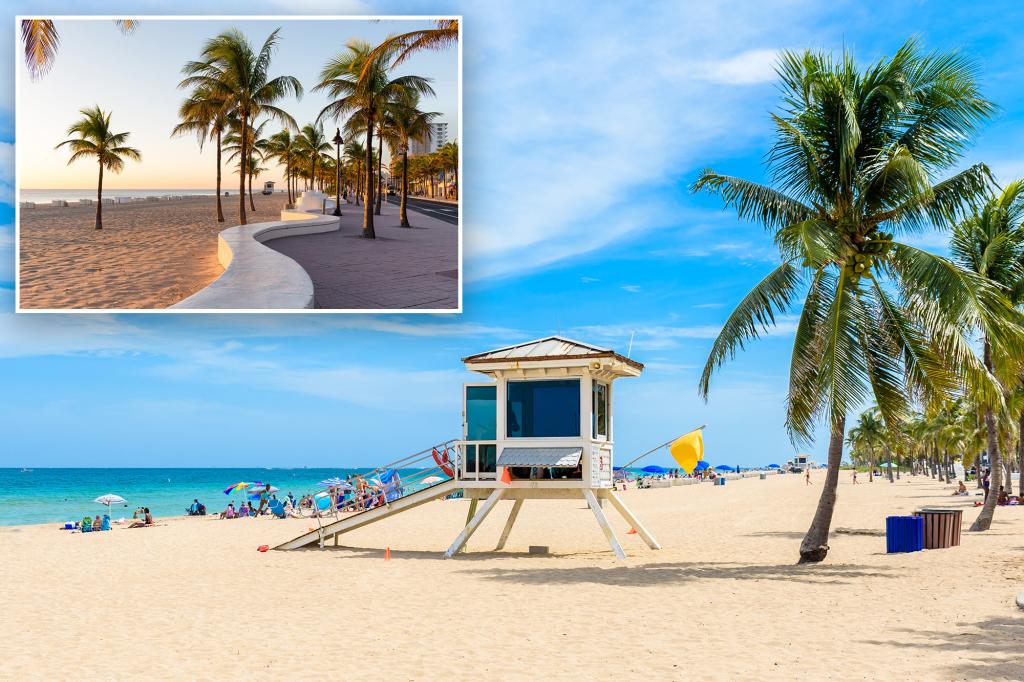World
Vacation destination closes beaches over gross ‘tar balls’ as cause remains a mystery: ‘Thought it was a sea creature’

Mysterious Tar Balls Disrupt Florida Beaches, Triggering Closures and Investigations
Several beaches in Florida were shut down on Saturday after mysterious tar balls began washing up along the shoreline. The unexpected appearance of these black, oily globules raised concerns among beachgoers and prompted immediate action from local authorities. The U.S. Coast Guard launched an investigation into the source of the tar, deploying both a plane and a boat from Miami and Fort Lauderdale to assess the situation. Despite efforts to identify the origin of the pollutant, the agency remained uncertain about where the tar balls came from.
The tar balls were reported across a stretch of coastline from Port Everglades to Palm Beach, with the heaviest concentration in Fort Lauderdale. There, wide sections of the beach were closed to swimmers as the oil washed ashore, leaving visible slicks on the water. The closures remained in place until approximately 5:30 p.m., when officials deemed it safe to reopen the shoreline.
Beachgoers React to the Unexpected Intrusion
The sudden arrival of the tar balls caught many beachgoers off guard. One visitor described the scene to NBC 6 South Florida, recounting how he initially mistook the black globules for sea creatures. “When we first came down here, there was like weird, black globs on the beach,” he said. “I thought it was a sea creature or something.” His confusion turned to alarm when lifeguards ordered everyone out of the water, citing the presence of oil.
Similar sightings were reported at other beaches, including Hollywood Beach, Deerfield Beach, Boca Raton, and Pompano Beach. However, the tar balls were less widespread in these areas and did not lead to full closures. In Fort Lauderdale, though, the situation was more severe, with oil covering large portions of the sand and water.
A Resident’s Perspective: Oil’s Unexpected Impact
Seth Platt, a Fort Lauderdale resident, experienced the situation firsthand during a sunrise walk on the beach. He noticed something sticky on the bottom of his foot, which he later discovered was oil. Upon returning to his car, he saw “little blobs” of tar scattered across the sand. Platt’s children, who were participating in a school-organized beach cleanup that morning, also encountered the tar balls. Despite his warnings, they returned with tar covering their feet.
The incident highlights the disruption the tar balls caused to what would otherwise have been a peaceful day at the beach. Platt’s experience underscores the inconvenience and confusion felt by many who visited the shoreline that morning.
The Search for Answers: Investigating the Source
Authorities are still unsure where the tar balls originated, but Fort Lauderdale Mayor Dean Trantalis and other officials have speculated that they might have come from a nearby tanker. The Coast Guard is working closely with the Florida Department of Environmental Protection and other state agencies to identify the source of the pollutant.
Despite the uncertainty, officials have downplayed the immediate health risks associated with the tar balls, describing them as more of a litter problem than a hazard. However, the beaches remained closed until the oil slicks dissipated, ensuring the safety of visitors.
Cleanup Efforts and Community Response
Cleanup efforts were quickly underway, with local teams working to remove the tar balls and restore the beaches to their usual condition. Frank Guzman, a spokesperson for the Fort Lauderdale Fire Rescue, noted that while the tar was problematic, the beach itself remained “beautiful” otherwise. “There’s no visible signs of anything unless you step in it,” he explained.
The community responded with a mix of concern and resilience. Many residents, including Platt’s children, pitched in during the beach cleanup, demonstrating a collective effort to address the unexpected environmental issue. While the disruption was unwelcome, it also highlighted the importance of community involvement in maintaining the beauty and safety of public spaces.
Moving Forward: Lessons Learned and Lingering Questions
As the situation returns to normal, questions about the origin of the tar balls remain unanswered. The Coast Guard’s ongoing investigation aims to determine whether the pollutant came from a tanker or another source. In the meantime, the incident serves as a reminder of the vulnerabilities of coastal ecosystems and the importance of vigilance in protecting them.
For beachgoers and residents alike, the experience was a stark reminder of how quickly a peaceful day by the water can be disrupted by environmental challenges. While the immediate threat has passed, the episode underscores the need for continued efforts to safeguard Florida’s coastline and ensure the safety of its natural spaces for future generations.